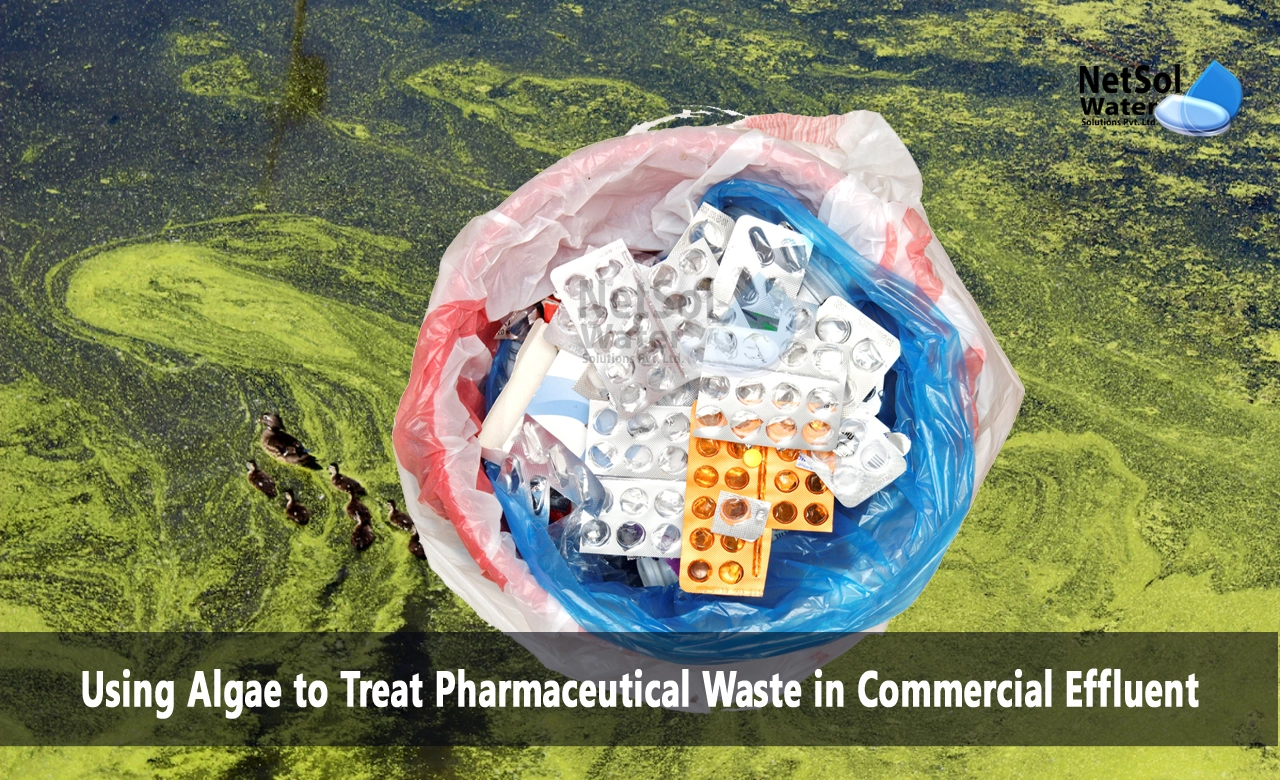How Algae Used to Treat Pharmaceutical Waste?
Pharmaceutical waste in wastewater from commercial sources like hospitals and drug manufacturing facilities is an emerging environmental issue. Many pharmaceuticals are not fully metabolized or absorbed by the human body, and get excreted and end up in wastewater. These include antibiotics, painkillers, antidepressants, hormones etc. Conventional wastewater treatment methods like chlorination are not equipped to remove these biologically active compounds. As a result, pharmaceutical residues have been frequently detected in surface waters worldover. This poses risks like development of antibiotic-resistant bacteria and endocrine disruption in aquatic life. Using algae to treat pharmaceuticals in commercial effluent is being researched as a promising solution.
Algae basics
Algae are diverse photosynthetic organisms that grow in aqueous environments. They can be unicellular or multicellular and exist in diverse forms. A key characteristic is that algae perform photosynthesis like plants, but don't have complex tissues like roots, stems and leaves. Algae require basic inputs - carbon dioxide, sunlight and nutrients to grow. In wastewater treatment systems, algae utilize dissolved nutrients like nitrogen and phosphorus to proliferate. As they grow, they produce oxygen. A feature that makes algae ideal for treating waste streams is that different algal species have appetite for different kinds of organic compounds and can break them down through metabolic processes.
Mechanism of pharmaceutical removal by algae
Several mechanisms enable algae to degrade or absorb pharmaceutical residues from water. Antibiotics like penicillins and cephalosporins contain a four atom ring structure that is essential for their antibacterial activity. Studies have shown that certain algae produce enzymes that can cleave this ring, essentially biotransforming and deactivating these antibiotics. Algae cell walls and membranes contain sites that can adsorb ionic drug molecules through electrostatic interactions and accumulate them. Factors like cell wall thickness, membrane area and surface functional groups impact adsorption capacity. Many pharmaceuticals have hydrophobic groups and tails. Such compounds get adsorbed onto algal biomass or get absorbed by lipids present inside algal cells. These removal mechanisms are often rapid, reversible and non-toxic to algae. As algae grow, harvested biomass can be safely biodegraded.
Implementing algal treatment systems
Pilot and lab-scale studies have demonstratedpotential of using algae, often in combination with bacteria, to remove diverse pharmaceuticals from synthetic and real wastewater. But designing full-scale algal systems requires understanding industry-specific effluent characteristics and feasibility. Hospitals effluent contains complex mixtures of antibiotics, disinfectants, radiocontrast agents, hormones and more. Manufacturing waste streams tend to have high levels of specific ingredients like APIs, solvents, intermediates. Components that inhibit algal growth or metabolism must be addressed through dilution, pretreatment or bacterial augmentation. Effective integration with existing treatment infrastructure is also crucial. Algal ponds can be added before primary clarifiers to utilize nutrients, or after secondary treatment to polish effluent. In cooler climates indoor photobioreactors may be required. Adequate hydraulic retention time should allow algae-pharmaceutical interactions without washout of algal biomass. Cost-benefit analysis of algal systems should account for energy requirements, biomass handling and processing, land use and overall sustainability.
Conclusion
Using algae to remove pharmaceuticals from commercial wastewaters is a promising ecotechnology. Diverse removal mechanisms enable algae to eliminate, transform or assimilate many emerging contaminants that escape conventional treatments. Lab to pilot scale results highlight potential of algae-bacteria systems tailored to different waste streams through rational engineering. But real-world implementation still faces barriers like costs, climatic factors, discharge guidelines and biomass disposal. Integrating algal components in existing infrastructure requires case-specific optimization between treatment performance and practical viability. More field-scale validation is vital, especially testing combination with tertiary processes like UV, ozone and activated carbon for better synergies. Genetic and metabolic engineering approaches also aim to develop designer algal strains with superior pharmaceutical degradation capacity, biosorption and ease of processing. As risks of pharmaceutical pollution grow, such green technologies can potentially achieve compliant discharge without environmental harm. With advances in biotechnology and more stringent regulation, algae may soon clean up a wider range of emerging contaminants from our waterways.
Netsol Water is Greater Noida-based leading water & wastewater treatment plant manufacturer. We are industry's most demanding company based on client review and work quality. We are known as best commercial RO plant manufacturers, industrial RO plant manufacturer, sewage treatment plant manufacturer, Water Softener Plant Manufacturers and effluent treatment plant manufacturers. Apart from this 24x7 customer support is our USP. Call on +91-9650608473, or write us at enquiry@netsolwater.com for any support, inquiry or product-purchase related query.



